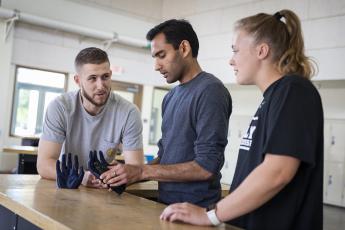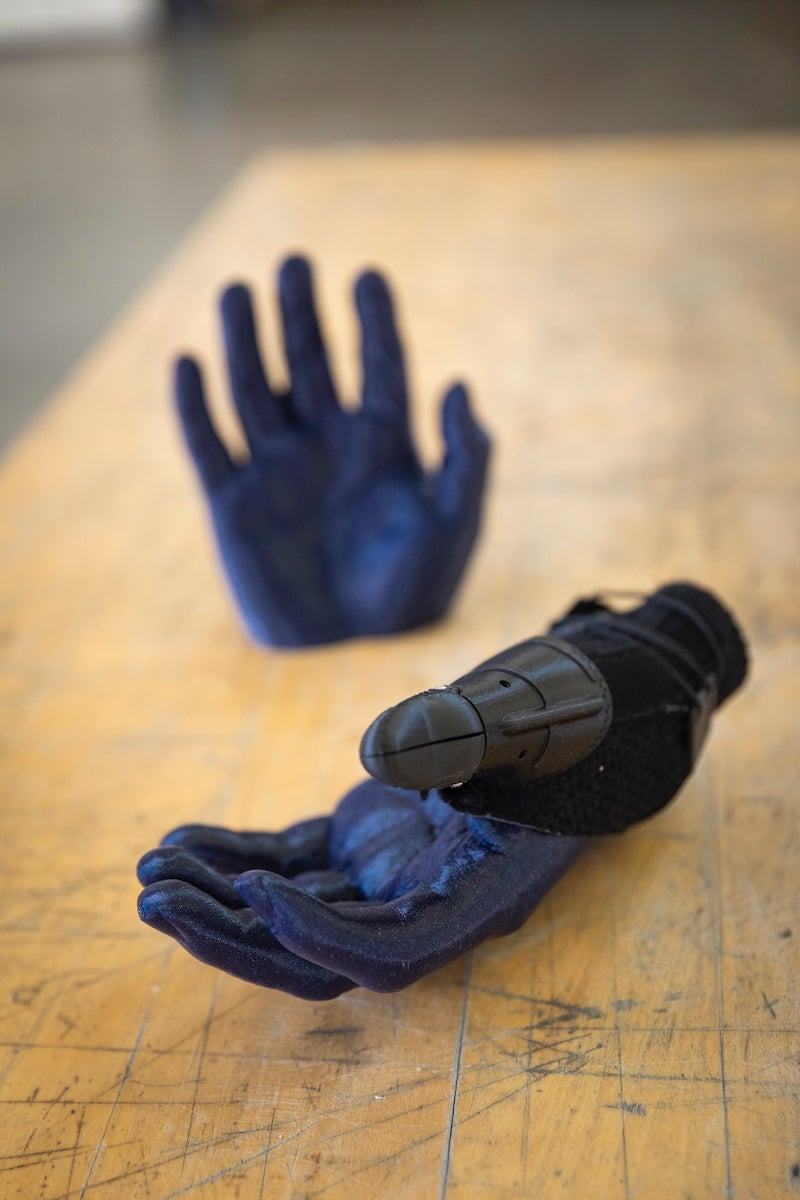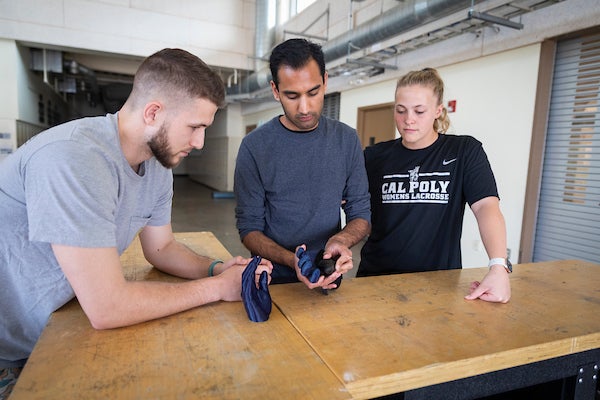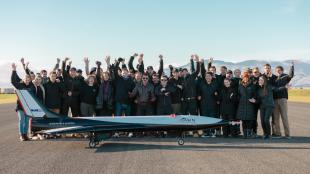A Cal Poly Pomona Student Lost His Thumb in an Accident. These Students are Building Him a New One

When Andrew Emmert heard last spring that a fellow engineering student at Cal Poly Pomona lost his thumb in an industrial accident, he knew he wanted to help.
He asked the student for permission to design a prosthetic for him, and with that permission he teamed up with his friend, Sahil Sharma, a biomedical engineering student at Cal Poly in San Luis Obispo.
They planned to build the prosthetic as a joint senior project between their schools.
“Being an engineering student, the use of your hands is very important,” Sharma said. “Losing one of your digits can be devastating.”

Sharma pitched the prosthetic project to his class, and Cale Foreman and Ally Sigdestad joined the group, motivated by the idea of having a direct, positive impact on another person’s quality of life.
“This is something you might see in QL+,” Sharma said. “This is the first project of its kind that required coordination between both schools, and it’s forming a professional connection between the two schools as well.”
But first, the student, whom the group refers to as their patient, needed months to let his hand heal. Ultimately, the student lost about 35 to 40 percent of the function in his left hand, Emmert said.
“You never realize how personally devastating it is to lose a limb,” Sharma said. “An amputee is going through all these things they can’t do anymore, and doing things to keep their psyche up has a big impact.”
The team drafted different ideas of what the prosthetic might look like and how the student might use it: some designs would look more similar to a human thumb but wouldn’t move, while other mechanical designs would move but wouldn’t look like a normal digit.
To figure out what would be best for their patient, they sought his input on designs and asked him about the things he missed doing.
“He wanted to be able to lift weights at the gym. He missed playing video games,” Emmert said. “He had trouble getting things out of his pockets.”
The team took measurements of their patient’s other hand and designed a mechanical prosthetic that was driven by a wire. But it wasn’t without its challenges: especially for Emmert, a mechanical engineering major who depended on the SLO team’s knowledge of biomedical engineering throughout the process.
“We accidentally found the deep end of the pool,” Emmert said, adding that nature of the amputation made it challenging to design a prosthetic for.
That’s because muscles and tendons extend pretty far into the body, so an amputation of the thumb can affect muscles and tendons elsewhere in the arm, Sharma explained.

Coordinating the project was another challenge. Cal Poly Pomona is on a semester system and on a different schedule than Cal Poly in San Luis Obispo, which runs on the quarter system — and the schools are hundreds of miles apart.
That meant a lot of mailing prototypes back and forth, as well as coordinating meetings with each other and trying to set feasible deadlines, which is similar to what would happen in a real-world situation, the group said.
“If you’re in the biomedical industry, you could be working with another group of manufacturers who might not be on the same timeline because they’re in another country,” Foreman said.
The group said they plan to stay committed to their patient and his prosthetic even after the senior project portion is over, and ultimately hope that their prosthetic will be a bridge until he needs a professional prosthetic.
“We all have the same common goal: to enhance the lives of others through engineering,” Foreman said.
And with each challenge, “We were thrown into it and had to figure it out,” Sigdestad said. “This is the most Learn by Doing thing I’ve done at Cal Poly.”


